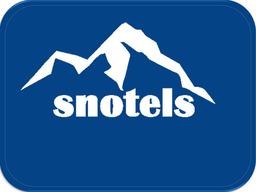This is an article written by Sarah Kershaw and published in the New York Times. Even if it was published in December 2009, I found it very interesting so decided to write some comments about it. The subject is about how restaurants use psychology on their menus to sell us pricy dinners without making us feel bad of spending money. It is what could be called subliminal mental manipulation. Of course when we are going to a restaurant that we already booked, we know in general how much menus cost, but even in such case, a good menu with a nice design and few subliminal techniques can make us forget we are spending pretty much for something not so special.
A very simple but efficient manner to make you feel happy buying an expensive menu is to use relatives. Who wouldn’t like to eat a special Grandma cooked plate. For an Italian restaurant it could be a Grandma’s Italian Lasagna. Another example is Uncle Sol’s butcher shop, which invites you to eat great burgers. In our mind, eating a plate cooked by our close family, like for instance our Grandma or Aunt, is exciting for our stomach even before having started to eat. It just makes our mind feel confident the food will taste great. We can see this technique is not only used in restaurants but also for selling products as rice. Almost everybody knows Uncle Ben’s rice. This is a good example of using psychology in order to sell us the product.
Another technique is the price presentation. Just by not using the € sign and writing 9 instead of €9 is more friendly for the client. “In the world of menu engineering and pricing, a dollar sign is pretty much the worst thing you can put on a menu…” Just by avoiding it, we are making the client feel more relaxed and not aggressed. A number that ends in a numeral like €9.99 inspires us value and not quality. Instead, It is more clever to use €9.95 which is friendlier. It is also better to not use pennies where you don’t need them. If you want to write twelve dollars for a price, you should better write 12 than 12.00. Of course without the dollar sign.
Restaurants are trying to permanently innovate in this field. A good menu presentation can be a key to more spending and keep clients coming. "The chefs write the music and the menu becomes the lyrics, and sometimes the music is gorgeous and it's got the wrong lyrics and the lyrics can torpedo the music". If you think these techniques are only reserved for pricy restaurants you may be wrong. In the casual dining arena engineers and consultants are trying to find the good recipe. Big food chains restaurants like Mc Donalds are a clear example of menu psychology use. With nice pictures and reference to farmers, fresh hamburgers, smokehouse bacon, country ham, they try to attract the client.
If you see that the most expensive item on the menu is at the top of it, it is not innocent. It is just to make other items look cheap in comparison. Research shows that people tend to order middle priced dishes. This idea came from newspaper layout, "which puts the most important articles at the top right of the front page, where the eyes tend to be drawn".
Just thin about it for a few seconds. You'll find around you all kind of manipulations used by companies, medias, through advertising. If you turn on your TV, you'll be surrounded by commercials and consumption invitation. Don't forget for the restaurant you are the entry and next time you to the restaurant, you will hopefully look at the menu differently.




